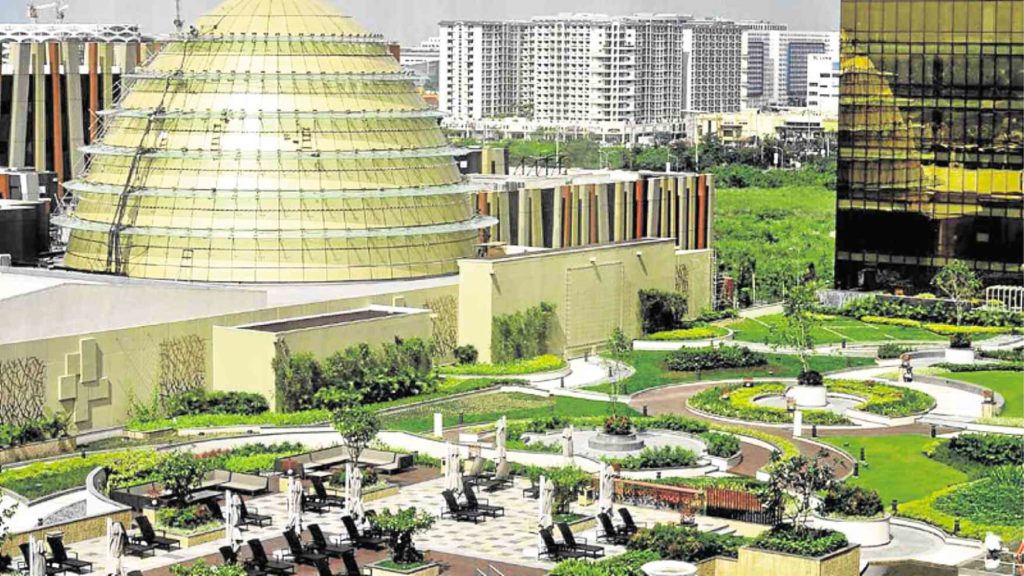
The value of reclaimed land in the Manila Bay area now ranges from P200,000 to P250,000 per sqm.
There is a fairly good reason why local property developers and conglomerates are increasingly drawn to the available reclaimed land in the Manila Bay area.
One should note that while there has been a growing appetite for office, residential, and retail projects in Metro Manila, there is however a lack of developable land in established business districts, thus compelling many developers to look for alternative landbanking options.
“The strong demand for office buildings will be complemented by residential and retail projects hence the need to reclaim more developable land,” said Paul Vincent Ramirez, Colliers International Philippines director for valuation.
“As developable land in Metro Manila’s major business districts becomes scarce and prices continue to surge, it is only practical for developers to look for viable landbanking alternatives such as reclaimed land in the Manila Bay Area,” Ramirez added.
Rising land values
Data from Colliers showed that the value of reclaimed land in the Manila Bay area now ranges from P200,000 to P250,000 per sqm, growing by an average of 30 percent annually over the past five years.
According to Colliers, the value of land in the Manila Bay area is significantly higher than the original cost of reclaiming it, which stood at P10,000 to P20,000 per sqm. However, acquiring property in that area is proving to be financially viable given the 40 percent difference in cost compared to land in established business hubs across the country’s capital.
As a point of comparison, remaining land in the central business districts of Makati and Fort Bonifacio ranges from P500,000 to P600,000 per sqm, rising about 20 percent a year.
Gaining popularity
Also, the popularity of reclaimed developments such as the Aseana City is gaining traction among developers and this reinforces the viability of reclaimed land as a highly feasible landbanking strategy.
Colliers noted that aside from outsourcing firms, traditional companies engaged in logistics, advertising, construction, online shopping, and consultancy have aggressively been expanding in the area, on the back of the country’s strong economic growth.
“The development of mixed-use communities across Metro Manila is becoming more popular as these projects integrate the live-work-play-shop lifestyle. The reclaimed land in the Manila Bay area is a feasible option for mixed-use projects as shown by the growing popularity of D.M. Wenceslao’s Aseana City,” Colliers said in a statement.
“The viability of mixed-use projects in the reclaimed Manila Bay Area is strengthened by the mix of completed and proposed public infrastructure projects nearby including the NAIA Expressway, Light Rail Transit (LRT) 1 Cavite Extension, Southwest Integrated Terminal, Sangley Airport, and Metro Manila subway,” it added.
According to Colliers, there are currently five active reclamation projects in the area
The 407-hectare New Manila Bay City of Pearl project that will be developed by a consortium led by UAA Kinming Group Development Corp. and its foreign partners.
Aside from typical township features such as office, residential, educational, retail, and medical projects, the integrated community will also house a driverless monorail, an 8,000-seat multi-purpose stadium, and an 18-hole golf course.
The Manila Solar City Project will reclaim 148 hectares of the waterfront, stretching from the Cultural Center of the Philippines to the United States embassy. The P23.6 billion project is envisioned as an entertainment hub that will have the first international cruise ship terminal in the country.
The 360-hectare Pasay City Reclamation Project covers the foreshore and onshore Manila Bay area within the city’s jurisdiction. The P57.5 billion project is near the existing Mall of Asia Complex, just across the Libertad Channel.
The 650-hectare Navotas City Coastal Bay Development Project—or the Navotas North Bay Business Park Project—will be developed around the proposed floating expressway that will connect the province of Bataan to Manila. It is estimated to cost P103.8 billion.
The Las Piñas-Parañaque Coastal Bay Reclamation Project involves the reclamation of 635 hectares of shallow coastal area from Asia World Properties to the municipality of Bacoor in Cavite. The P101-billion project is near the Las Piñas-Parañaque Critical Habitat and Ecotourism Area and will be developed as a mixed use project with spaces for commercial, residential, industrial, institutional, and educational zones.